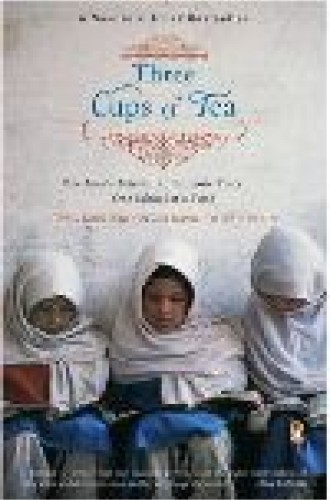Three Cups of Tea: One Man's Mission to Promote Peace. . . One School at a Time
Greg Mortenson grew up in Tanganyika, now Tanzania, the son of Lutheran missionaries. He says his parents wore their faith lightly, but from them he learned to appreciate people different from himself, to live simply and to care deeply about people who are impoverished.
When Mortenson was just 11, he and his father hiked to the top of Mount Kilimanjaro, and though he battled altitude sickness on his way to the top of Africa’s tallest mountain, that first expedition gave him a hankering for more mountain climbing.
As an adult living back in the United States, in 1993 Mortenson joined an expedition to the Himalayan mountain called K2. It is the second-highest mountain in the world after Everest and has a reputation for being more difficult and dangerous to climb. He never made it to the top. Coming back down, he got separated from his porter, became lost and ended up in a small, very isolated mountain village in northern Pakistan called Korphe. The people there took him in and showed him typical central Asian hospitality, especially manifested in taking time to drink tea with him. As the village chief said to him, “Here, we drink three cups of tea to do business; the first you are a stranger, the second you become a friend, and the third, you join our family, and for our family we are prepared to do anything—even die.”
Mortenson discovered that the children of Korphe had only a part-time teacher whom they had to share with a neighboring village, and they had no school building. The children met out in the open for class and scratched out their lessons with sticks, writing in the dirt. He promised to come back again and build them a school. And he kept his promise.
Once the school in Korphe was built, word spread to other villages, whose people asked Mortenson if he would do the same thing for them. He couldn’t say no. Eventually he formed a not-for-profit organization, the Central Asia Institute, to oversee the work. Word continued to spread, and villages in Taliban-controlled areas of Afghanistan implored him to do the same for them. At great risk to his own safety, he took on that challenge as well. His big breakthrough came in April 2003, at the outset of the Iraq war, when a cover story about his work appeared in Parade magazine (written by journalist David Oliver Relin, who collaborated with Mortenson on this book). After this national exposure, money—which had always been in short supply—started pouring in.
The subtext to this remarkable story is about how best to deal with the challenge of Islamic-inspired terrorism. Mortenson doesn’t have his head in the sand. All around where he is building his own schools, madrassas—schools that teach a militant form of Islam—are being built with Saudi Arabian funding.
Speaking to members of Congress, Mortenson said that he is building schools in Pakistan and Afghanistan not in order to fight terrorism but because he cares about kids. “But working over there, I’ve learned a few things,” he said. “I’ve learned that terror doesn’t happen because some group of people somewhere like Pakistan or Afghanistan simply decide to hate us. It happens because children aren’t being offered a bright enough future that they have a reason to choose life over death.” And when he had a chance to speak to military planners at the Pentagon, he pointed out that the cost of one missile being used in Afghanistan could build dozens of schools that would provide a nonextremist education to tens of thousands of students over a generation. Which do you suppose is making us more secure, he asked, the missiles or the schools?
Like many driven by a grand vision, Mortenson has his flaws. He finds it difficult to work with the governing board of his organization. And while his wife is very supportive of his work, he tends to neglect his family at times, and he does not always take the best care of himself. And yet what started out as a failure—not reaching the summit of K2 and getting lost coming back down—has turned into a marvelous mission. His Web site (www.ikat.org) reports that “as of 2007, Central Asia Institute has successfully established 58 schools in Pakistan and Afghanistan, which provide (or have provided) education to over 24,000, with an emphasis on girls’ education.” He has already accomplished in his lifetime what it would take most people several lifetimes to complete.





